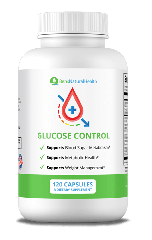- Q: What Is Prostate Cancer?
- Q: What Is Prostatitis?
- Q: What Are The Signs And Symptoms Of Prostate Cancer vs Prostatitis?
- Q: What Causes Prostatitis Vs Prostate Cancer?
- Q: Are The Treatments For Prostatitis And Prostate Cancer Different?
- Q: What Should I Do If I Think I Have Prostate Problems?
- Key FAQs on Prostatitis vs Prostate Cancer
- Conclusion
- Our Medical Review Process
- Our Editorial Guidelines
- Medical Disclaimer
- Source
The prostate gland is an integral part of the male reproductive system. It secretes prostate fluid, which nourishes sperm, and surrounds the urethra—a key component of the urinary tract. When prostate problems occur, they can lead to complications in the gland’s function as well as urinary symptoms. Two common conditions that affect the prostate are prostatitis and prostate cancer. Although these conditions may share similar symptoms, understanding prostatitis vs prostate cancer is essential for proper diagnosis and treatment.
We spoke with Dr. Kelepurovski, a renowned expert in urology, who provided insights based on recent studies and clinical experience for this article. Dr. Kelepurovski’s answers will help you understand the differences between prostatitis and prostate cancer, the signs and symptoms to watch for, and the available treatment options. All the content provided has been thoroughly reviewed by a medical doctor to ensure accuracy and reliability.
Get Your FREE PSA Lowering Diet Plan!
- Naturally lower PSA levels
- Reduce nighttime trips to the bathroom
- Enjoy better bladder control and urine flow
Q: What Is Prostate Cancer?
Dr. Kelepurovski answers: Cancer is a severe disease that can affect various parts of the body, including the prostate gland. As research shows, prostate cancer is a relatively common disease—according to the American Cancer Society, approximately 248,530 men were expected to be diagnosed in 2021, with about 34,130 deaths from the disease in the same year. Prostate cancer is the second most common cancer among men and tends to grow slowly, often without any noticeable symptoms in its early stages. In cases of localized prostate cancer, where the cancer is confined to the prostate gland and has not spread to surrounding tissues, doctors may opt for active surveillance rather than immediate treatment. However, not all prostate cancers are slow-growing; aggressive or metastatic prostate cancer can spread to other tissues.
Spreading
In metastatic prostate cancer, the cancer cells can enter the bloodstream or lymphatic system, spreading to areas such as:
- The liver
- The lungs
- Lymph nodes throughout the body
- Bones
- The brain
There are rare cases where metastasis also affects other parts of the body, such as the breasts, eyes, pancreas, adrenal glands, kidneys, or muscles.
Q: What Is Prostatitis?
Dr. Kelepurovski answers: As research shows, Prostatitis is a condition that involves inflammation of the prostate gland. Unlike prostate cancer, prostatitis is not caused by cancerous cells, nor is it the same as an enlarged prostate from benign prostatic hyperplasia (BPH). Prostatitis can cause the prostate to become swollen and tender. It is a relatively common condition—studies show that about 8.2% of male patients may have prostatitis, accounting for around 8% of urologist visits and 1% of primary care appointments.
4 Main Types of Prostatitis
There are four main types of prostatitis:
- Acute Bacterial Prostatitis: Bacteria travel from the urinary tract to the prostate, leading to an acute infection. This is considered a serious complication requiring immediate medical attention.
- Chronic Bacterial Prostatitis: Bacteria also cause this type, but the condition is less severe than its acute counterpart and typically affects older men, often following a urinary tract infection. Symptoms tend to occur in episodes.
- Chronic Prostatitis (Chronic Pelvic Pain Syndrome): This is the most common type, and it is not always caused by bacteria. It presents with similar symptoms to chronic bacterial prostatitis, but no bacteria are found in the prostate gland.
- Asymptomatic Prostatitis: In this type, inflammation is present, but no symptoms are reported. This condition has been linked to a higher risk of infertility.
Q: What Are The Signs And Symptoms Of Prostate Cancer vs Prostatitis?
Dr. Kelepurovski answers: Both conditions can cause pressure on the urinary tract, resulting in similar urinary symptoms. However, there are specific signs that help differentiate them:
Prostatitis Symptoms
- Acute Bacterial Prostatitis:
- High fever
- Chills
- Trouble urinating
- Persistent urge to urinate
- Pain in the scrotum and at the base of the penis
- Cloudy urine
- Chronic Bacterial Prostatitis:
- Pain in the rectum and lower back
- Pain during ejaculation
- Painful urination
- Nighttime urinary urgency
- Blood in semen
- Weaker urine stream
- Chronic Prostatitis (Nonbacterial):
- Pain often affects the tip of the penis and the perineum
- Pain in the lower abdomen
Prostate Cancer Symptoms
- Weaker-than-normal urine flow
- Increased frequency of urination
- Blood in the urine or semen
- A burning sensation when urinating
- Discomfort when sitting
- Increased urinary frequency at night
It is important to note that prostate cancer is usually asymptomatic in its early stages and symptoms often appear only when the tumor has grown larger.
Q: How would prostatitis differ from prostate cancer?
Both of these can cause problems with your urine, but there are main indicators that distinguish them. Let us dissect it as follows:
Usually, prostatitis—especially the bacterial type—comes on rapidly. You may have chills, a fever, severe lower back, scrotal, or even urine-related acute pain. Your body seems to be sounding the alert that something isn’t quite right.
Additionally seen could be:
- During ejaculation, pain
- An always strong need to urinate
- Urine that is cloudy or smells bad
And in cases of chronic prostatitis, even in absence of an infection, that pain might last for weeks or months. On the other hand, prostate cancer usually lurks silently. Early on, most guys experience nothing at all. When symptoms do strike, though, they are more related to slow changes like:
- a smaller pee flow
- needing more frequent nighttime bathroom breaks
- blood in your semen or urinary stream.
Alternatively, if further advanced, soreness in the pelvic region or bones. One important hint is how your body reacts to antibiotics. Treatment helps prostatitis, particularly if it is bacterial. Nor does prostate cancer. Both can raise your PSA levels, but in cancer they usually remain high or keep rising.
When to Worry? See a doctor ASAP if you have these warning signs:
- You have fever + trouble peeing (could be acute prostatitis).
- You’re over 50 with new pee problems or blood in pee/semen.
- You have bone pain or unexplained weight loss (don’t ignore this!).
Don’t panic, but get checked:
- Prostate cancer grows slowly for many men, and catching it early makes a huge difference.
- Prostatitis can be annoying, but it’s usually treatable!
Q: What Causes Prostatitis Vs Prostate Cancer?
Dr. Kelepurovski answers: Consider prostatitis as inflammation of the prostate. It can occasionally be caused on by bacteria and other times we simply have no understanding why. Usually resulting from either acute or chronic bacterial prostatitis, this condition can be brought on by urinary tract or even rectal bacteria invading the prostate.
It can also follow procedures like catheter use or in case of a urinary tract infection (UTI). Particularly in younger males, STIs like chlamydia or gonorrhea can also lead to it. Though men still experience pain and discomfort, non-bacterial prostatitis—also known as chronic pelvic pain syndrome—is trickier—there is no infection.
Tight pelvic muscles, nerve irritation, stress, or perhaps earlier illnesses that left the area sensitive might all be the cause.
Other factors like long hours seated, dehydration, and even an enlarged prostate could be relevant.
Briefly: It most certainly is bacterial if it strikes quickly and forcefully with fever and pain. The pain is probably non-bacterial if it persists for weeks or months free of infection.
Prostate cancer is today a different narrative. Usually, it begins when prostate cells begin to grow wildly and develop a tumor. Although the precise reason this occurs is yet unknown, we do know some things increase your risk.
- Age: The very first risk element is this. Most men diagnosed are over fifty, and as you age your risk increases.
- Family history: Your risks are higher if your uncle, brother, or dad developed prostate cancer. Certain hereditary gene mutations—such as BRCA1 or BRCA2—may cause things to get more aggressive.
- Race: Black men are more likely to get prostate cancer and typically start it younger. Men of Asian and Hispanic background often have a reduced risk.
- Obesity: Overweight people run a higher risk of advanced or more aggressive prostate cancer. It could have to do with body inflammation and hormonal levels.
- Diet & Lifestyle: A diet heavy in processed food, red meat, and dairy can somewhat increase your risk. Conversely, abundance of fruits, vegetables, and good fats can help guard your prostate. Furthermore bad for your prostate are smoking and lack of exercise.
- Chemical interaction: Some compounds, including Agent Orange, have been connected to an increased risk—particularly among veterans.
What then, is the significant difference between prostatitis and cancer? The major difference lies in what causes them and how they behave.
- Prostatitis is usually caused by inflammation or infection—something that irritates or inflames the prostate, and it often shows up suddenly with pain, fever, and urinary issues. It can affect men of any age, especially younger or middle-aged men.
- Prostate Cancer, on the other hand, happens when cells in the prostate start growing abnormally, forming a tumor. It usually develops slowly, doesn’t cause symptoms at first, and is more common in older men, especially over 50.
Q: Are The Treatments For Prostatitis And Prostate Cancer Different?
Dr. Kelepurovski answers: Indeed, they are rather distinct as we are dealing with two quite different conditions.
Regarding prostatitis, particularly in cases of bacterial infection, antibiotics normally start the road towards eradication of the infection. Particularly in chronic situations, these could have to be taken for several weeks.
Other therapeutic choices could include:
- Anti-inflammatory drugs help to alleviate pain and lower swelling.
- Like tamsulosin, alpha-blockers help to relax muscles surrounding the prostate therefore enhancing urine flow.
- Painkillers for lower back or pelvic trouble
- Changing your lifestyle includes drinking more water, avoiding alcohol or hot foods, and practicing pelvic floor treatment or warm baths.
In non-bacterial prostatitis, too, the emphasis is mainly on pain management, muscle relaxation, and symptom reduction—not antibiotics—because there is no infection.
Treating an enlarged prostate (BPH) in conjunction with prostatitis occasionally helps reduce urine symptoms and may even gradually increase sexual performance.
Treatment for prostate cancer is more complicated and relies on the degree of aggressiveness of the tumor and its dissemination.
First, usually, clinicians validate the diagnosis by:
- PSA blood check
- DRE, or digital rectal exam
- And frequently a biopsy to study prostatic tissue
There are several treatments available:
- Active Surveillance: Doctors may decide to just monitor low-risk slow-growing tumors over time using routine visits, PSA tests, and sporadic scans. Unless it starts to flourish, no quick treatment is required.
- Surgery: If the cancer is still localized, radical prostatectomy—removal of the prostate gland is the possibility.
- Radiation Therapy: Used to destroy cancer cells, particularly in cases of close cancer spread or if surgery is not desirable.
- Androgen Deprivation Therapy: Hormone Therapy: Since prostate cancer cells generally rely on male hormones to flourish, this helps reduce testosterone levels.
- Immunotherapy or Chemotherapy: Used for more advanced tumors, particularly if they have progressed outside the prostate. Treatment for prostate cancer aims to contain the cancer, stop it from spreading (metastasizing), and, as far as possible preserve quality of life.
In short: Treat the inflammation or infection caused by prostatitis generally with antibiotics and anti-inflammatories. Treating prostate cancer involves treating the actual tumor, which may involve hormone therapy, radiotherapy, surgery, or close observation.
Q: What Should I Do If I Think I Have Prostate Problems?
Dr. Kelepurovski answers: Men should be aware of the symptoms associated with prostate issues and seek medical evaluation promptly. Whether symptoms are related to prostatitis or prostate cancer, early detection is key. A digital rectal exam is often the first step, followed by additional diagnostic tests as needed. Regular check-ups are especially important for older men or those with risk factors. Annual prostate check-ups are recommended, with more frequent examinations advised for older men.
Key FAQs on Prostatitis vs Prostate Cancer
Q: How do genetic factors influence the risk of developing prostate cancer compared to prostatitis?
Dr. Kelepurovski answers: While they have relatively little effect in relation to prostatitis, genetics significantly contribute to the likelihood of prostate cancer.
Regarding prostate cancer, there are clear hereditary ties. Your risk of prostate cancer may double or even triple if you have a family history of the disease—especially if a father, brother, or uncle has been diagnosed. Others inherit particular gene mutations that raise their risk even further. Among these are HOXB13 mutations and Lynch syndrome, a hereditary disorder connected to numerous forms of cancer; BRCA1 and BRCA2 are also linked to breast cancer.
Although these mutations do not ensure that prostate cancer will arise, they greatly increase the likelihood—especially in cases with younger-age cancer or family history of the disease. The American Cancer Society estimates that inherited genetic abnormalities account for about 10% of prostate malignancies.
By contrast, prostatitis is not thought to be a hereditary disorder. It usually stems from bacterial infections, pelvic floor dysfunction, immunological reactions, or inflammation caused by physical trauma or persistent stress. Strong data does not point to prostatitis running in families or passing on through genes. Rather than inherited features, its growth usually corresponds with environmental, lifestyle, or anatomical elements.
While prostatitis is more usually associated with inflammation, infection, or physical irritation and has no known genetic cause, family history and inherited genetic abnormalities can clearly affect prostate cancer risk.
Q: What lifestyle changes can reduce the risk of both prostatitis and prostate cancer?
Dr. Kelepurovski answers: Although your age and genes are unchangeable, there is plenty you can do to maintain prostate health and lower your chances of both prostatitis and prostate cancer.
Changing to a prostate-friendly diet is among the most sensible actions one can do. This means emphasizing meals high in fruits, vegetables (particularly tomatoes, broccoli, and leafy greens), whole grains, and beneficial fats, including those found in fish, nuts, and olive oil. Foods high in antioxidants as well as green tea could possibly provide protection. Conversely, you should cut red and processed meats, high-fat dairy, and sugary or too-processed foods.
Studies of a Mediterranean-style diet have indicated that it can help control inflammation and cut prostate cancer risk.
Additionally vital is staying physically active. Regular exercise lowers body fat, boosts the immune system, helps control inflammation, and increases pelvic area blood flow. Given the connection between obesity and more aggressive prostate cancer as well as more frequent prostatitis flare-ups, physical activity holds significant importance. Most days, try to get at least thirty minutes of moderate exercise—that is, swimming, walking, or cycling.
Another vital component is hydration. Drinking enough water all day helps the urinary tract flush germs, therefore reducing the chance of infections that could cause bacterial prostatitis. Keeping a good weight is similarly crucial since extra body fat not only raises cancer risk but also fuels chronic inflammation, which could aggravate prostatitis symptoms.
Additionally important are safe sexual behaviors, especially for avoiding bacterial prostatitis. Regular testing and protection help lower the risk of sexually transmitted illnesses such as chlamydia and gonorrhea, which can affect the prostate.
Though sometimes disregarded, stress management is quite crucial. Especially in the pelvic floor, chronic stress can cause muscle tension and may aggravate or start non-bacterial prostatitis. Deep breathing, meditation, and consistent relaxation are among the strategies that can lower tension and enhance general pelvic condition.
At last, never undervalue the need for routine visits and PSA tests. Early identification—especially for those over 50 or those with a family history of prostate cancer—can significantly affect therapy results.
All told, a balanced diet, frequent exercise, enough water, good weight management, safe sex, stress management, and regular medical check-ups all help to safeguard your prostate and support long-term health.
Q: How often should men undergo screening for prostate conditions as they age?
Dr. Kelepurovski answers: Prostate screening frequency varies according to a man’s age, risk factors, and general condition of health. Although there is no one-size-fits-all response, several broad rules should help:
Most men should start talking about prostate cancer screening at age 50. Usually the process comprises a PSA (prostate-specific antigen) blood test as well as, occasionally, a digital rectal exam (DRE). Usually, screening is repeated every one to two years if findings are normal.
Males at greater risk, such as those with a family history of prostate cancer or African American males, should begin screening earlier—about age 45, or even age 40 in some situations.
Depending on their specific health situation, men over 75 years old or those with a life expectancy of fewer than 10–15 years may not gain from regular screening.
Most of the time, people don’t actively screen for prostatitis unless symptoms are present. If a man experiences pelvic pain, urinary discomfort, or frequent infections, it is important to conduct a medical assessment to rule out prostatitis or other urologic diseases.
Q: What are the latest advances in imaging and diagnostic techniques for distinguishing between prostatitis and prostate cancer?
Dr. Kelepurovski answers: Recent developments in imaging and diagnostic technologies have significantly enhanced our capacity to differentiate between prostatitis and prostate cancer, two disorders that often present with overlapping symptoms but call for somewhat different treatment methods.
The application of multi-parametric MRI (mpMRI) is among the most important developments here. To give a complete picture of the prostate, this imaging method combines several types of MRI scans, such as T2-weighted imaging, diffusion-weighted imaging (DWI), and dynamic contrast-enhanced (DCE) imaging. MPMRI distinguishes from inflammatory changes observed in prostatitis and helps detect suspicious lesions suggestive of prostate cancer. Nowadays, doctors typically use it prior to biopsy to eliminate unnecessary procedures and enhance the precision of the diagnosis.
The PI-RADS (Prostate Imaging–Reporting and Data System) score system is still another significant advance. By helping radiologists categorize MRI results and evaluate the probability of clinically relevant prostate cancer, this standardized reporting method enhances diagnosis consistency.
Furthermore, a very sensitive technique has become PSMA PET/CT imaging, particularly helpful in prostate cancer staging and recurrence detection. Although its part in the first diagnosis is still developing, it can more precisely detect cancer spread than conventional scans.
More easily available is advanced biomarker testing. While PSA is still a common screening method, newer blood and urine tests—such as the 4Kscore, PHI (Prostate Health Index), and PCA3—provide better risk assessment and can help decide if more imaging or a biopsy is needed.
Although diagnosis for prostatitis still mostly depends on clinical history, digital rectal exam, urine, and culture, more recent techniques like MRI spectroscopy may provide new insights by identifying chemical variations between inflammation and cancer.
Overall, using multi-parametric MRI, PET imaging, and new biomarkers has significantly improved the accuracy of prostate tests, allowing for more personalized treatment choices and clearer distinction between prostatitis and prostate cancer.
Q: What role does chronic inflammation play in the progression from prostatitis to prostate cancer?
Dr. Kelepurovski answers: One increasingly acknowledged possible relationship between prostatitis and the growth of prostate cancer is chronic inflammation. Although not all men with prostatitis will have cancer, persistent inflammation in the prostate can lead to cellular changes that progressively increase the risk.
The body’s normal reaction to illness or injury is inflammation. But when it becomes chronic—especially in the prostate—it can cause a cycle of tissue damage and healing. This continuous process could encourage genetic mutations and aberrant cell growth by causing DNA damage, increasing oxidative stress, and altering the local immunological milieu.
Actually, studies of prostate tissue have revealed pockets of chronic inflammation called proliferative inflammatory atrophy (PIA). These regions are thought to be possible precursors to prostatic intraepithelial neoplasia (PIN) and finally prostate cancer. Though this sequence does not apply in every case, it emphasizes the possibility of chronic inflammation over time helping to fuel cancer development.
Some studies also show that inflammatory cells release substances like cytokines and growth factors that can promote angiogenesis—the formation of new blood vessels that feed tumors—while weakening normal immune monitoring, which helps tumors grow.
Not just bacterial prostatitis but also non-bacterial reasons like dietary elements, hormonal abnormalities, autoimmune activity, or even persistent stress can lead to chronic inflammation.
In essence, while chronic prostatitis doesn’t directly cause prostate cancer, it may contribute to an increased risk by creating an environment that supports cancer development.. This argument emphasizes the need for early prostatitis treatment, changes in lifestyle to lower inflammation, and frequent men’s at-risk screening.
Q: How do treatment outcomes compare between patients with prostatitis and those with prostate cancer?
Dr. Kelepurovski answers: Prostate cancer and prostatitis have different treatment outcomes, mostly depending on the kind of each ailment, the treatment strategy, and the stage of treatment starting point.
Prostatitis is often treatable with good outcomes. For most men with acute bacterial prostatitis, results are usually really satisfactory. Early diagnosis means that treatment with antibiotics, anti-inflammatory drugs, and supportive care usually results in complete recovery in a few weeks. Though most people respond satisfactorily, chronic bacterial prostatitis may take more time to treat and occasionally calls for continuous antibiotic treatment.
More difficult is chronic prostatitis/chronic pelvic pain syndrome (CP/CPPS), which frequently has no known cause and does not respond to antibiotics. With a multimodal strategy incorporating drugs, pelvic floor physical therapy, stress reduction, and lifestyle changes, results can still be favorable. Although symptoms can be recurring or constant, they are not life-threatening; many patients find long-term symptom control with appropriate therapy.
Aggressiveness and Stage Affect Prostate Cancer treatment. Prostate cancer treatment results vary greatly and rely on elements including the stage of the cancer, grade (Gleason score), PSA level, and general health of the patient.
- When treated early with surgery, radiation, or even active surveillance in low-risk cases, localized prostate cancer—confined to the prostate—has outstanding results with 5-year survival rates near to 100%.
- Outcomes for locally advanced or regionally distributed cancer are still favorable but may demand a mix of treatments (e.g., surgery plus radiation plus hormone therapy).
Although advanced or metastatic prostate cancer is not thought to be curable, individuals can live for many years with managed disease and preserved quality of life with more recent treatments such as androgen deprivation therapy (ADT), chemotherapy, PSMA-targeted therapy, and immunotherapy.
Having said that, depending on the treatment, prostate cancer might have long-term adverse effects, including bowel changes, urine incontinence, and sexual dysfunction, all of which might affect quality of life.
Conclusion
Prostatitis and prostate cancer share some common symptoms, which can sometimes lead to confusion between the two conditions. While bacterial prostatitis generally responds well to treatment with antibiotics and anti-inflammatory drugs, prostate cancer can be more challenging and may result in severe complications if not addressed early. Understanding the differences between these conditions, recognizing the signs and symptoms, and seeking timely medical advice are critical steps in managing prostate health.
Consult with your healthcare provider before initiating any antibiotic treatment to ensure appropriateness for your specific health needs.
Our Medical Review Process
At Ben’s Natural Health, we prioritize transparency, accuracy, and scientific integrity in every piece of content we produce. Our medical professionals carefully develop and review all materials, ensuring they undergo a thorough evaluation every 12 to 24 months. This rigorous process keeps our information accurate, up-to-date, and rooted in credible, evidence-based research. We exclusively reference peer-reviewed studies from reputable medical journals, providing full citations and direct links to maintain trust and confidence. Learn more about our medical review process and research standards.
Our Editorial Guidelines
For over 25 years, Ben’s Natural Health has been a trusted source of science-backed information on natural health. Our editorial guidelines are designed to uphold the highest standards of quality and reliability. Each article is written by qualified professionals—including doctors, dietitians, nutritionists, fitness experts, and surgeons—and undergoes independent quality checks. We emphasize transparency by prominently displaying contributor credentials and biographies at the beginning of each article. Explore our editorial guidelines to learn more about how we create and verify our content.
Medical Disclaimer
The content on this blog is for informational purposes only and should not be considered a substitute for professional medical advice, diagnosis, or treatment. While our articles are written and reviewed by licensed medical professionals, they may not address your specific health concerns. Always consult a qualified healthcare provider before making any medical decisions. Never ignore or delay seeking professional medical advice based on the information found here. Your use of this blog and its content is at your own risk.







